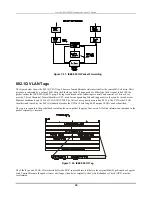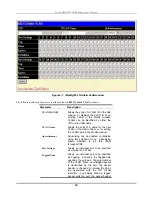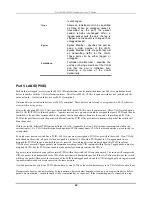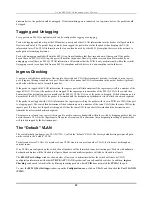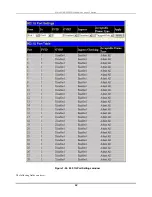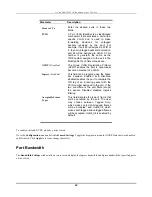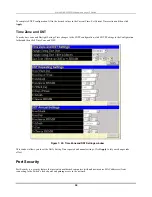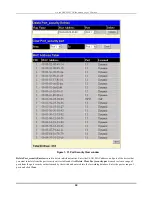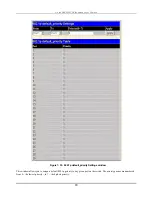
D-Link DES-3250TG Standalone Layer 2 Switch
QOS (Quality of Service)
The DES-3250TG switch supports 802.1p priority queuing. The switch has four priority queues. These priority queues are
numbered from 0 — the lowest priority queue — to 3 — the highest priority queue. The eight priority queues specified in
IEEE 802.1p (Q0 to Q7) are mapped to the switch’s priority queues as follows:
Q2 and Q1 are assigned to the switch’s Q0 queue.
Q3 and Q0 are assigned to the switch’s Q1 queue.
Q5 and Q4 are assigned to the switch’s Q2 queue.
Q7 and Q6 are assigned to the switch’s Q3 queue.
The switch’s four priority queues are emptied in a round-robin fashion—beginning with the highest priority queue, and
proceeding to the lowest priority queue before returning to the highest priority queue.
For strict priority-based scheduling, any packets residing in the higher priority queues are transmitted first. Only when these
queues are empty, are packets of lower priority transmitted.
The weighted-priority based scheduling alleviates the main disadvantage of strict priority-based scheduling
−
in that lower
priority queues get starved of bandwidth
−
by providing a minimum bandwidth to all queues for transmission. This is
accomplished by configuring the maximum number of packets allowed to be transmitted from a given priority queue and the
maximum amount of time a given priority queue will have to wait before being allowed to transmit its accumulated packets.
This establishes a Class of Service (CoS) for each of the switch’s four hardware priority queues.
The possible range for maximum packets is: 0 to 255 packets.
The possible range for maximum latency is: 0 to 255 (in increments of 16 microseconds each).
Remember that the DES-3250TG has four priority queues (and thus four Classes of Service) for each port on the switch.
Traffic Control
This window allows you to manage traffic control on the switch.
Click
Traffic control
in the
QoS
folder on the
Configuration
menu:
70

